Finding our way. What a statement. I write this in context as I stop to pause and think about the state of the world and the state of our hearts. There is always much uncertainty. There is much sadness.
As much as we might like to skip over a few chapters to find out the ending and the resolution of what lingers, we cannot. None of us have ever had that choice. Life unfolds before us and around us. We don’t know what we will see and hear and touch. We don’t know what we will face. Birth, illness, death, risk, trauma. We cannot change the reality of what happens to us. If you get thrown in jail, the love of your life leaves you, you flunk out of college, you get fired from a job. Trauma touches us all in the end. As author Roxane Gay once wrote, “We are all walking wounds.” Wounds and stories become woven into the body and into our narratives. Folded in. How do you talk about these wounds? How are they felt? How are they storied? How and where do you place yourself in these stories about such wounds? Well, I can tell you that such a story is worth writing and hearing. You are the only one who can tell your story and that is everything. That is tremendous power.
An interesting thing happens when we write and tell our stories to someone. The more times we recall a memory, the more it can shift. We have more agency in creating a story that may actually fit us and the image we have of ourselves. It may become a story we can live with. It may become clearer. It may emerge from the shadowy crevasse of the heart and sit beside you for a bit. I might suggest you release the pull and expectation of needing to have a clear beginning, middle and end. Life doesn’t work that way anyway. If you enter into a particular story of yours right then and there – smack dab in the middle of it – so be it. If it feels like a safe entry, trust it. Go from there. You’ve already come this far.
Sandra Marinella writes that we cannot deny what we experience, but we can edit and rewrite painful episodes. We can highlight and color and texturize the episodes that sent our hearts fluttering. When we move our experiences from our emotion-filled right brains into the world of our left brain, we can reach an understanding of what happened to us. There is risk involved, of course. Much can be gleaned when we start to look inward, or up, or sideways. Here, there is choice. Rebuild, or scatter it to the winds.
And so, we write. Write in the thick of trouble and heartache. I like to think writing is a way of seeing ourselves. Another way to love ourselves, word by word. Putting pen to paper can feel like forgiveness.
A brief writing exercise to do by yourself:
In times of uncertainty, grief and trauma, we can lean on the resources within ourselves. The anchors within. Something always starts and begins from something else. What is at your root? Is it a memory? A person? A symbol? I might suggest starting with, “At the root of me there is….”
If you’d like to learn how writing can further assist us in reclaiming our own story and lives, please consider Kelsey’s group therapy series: “Making Meaning: Using Stories to Heal, Broaden and Reclaim our Lives.” For more info, please click here.



